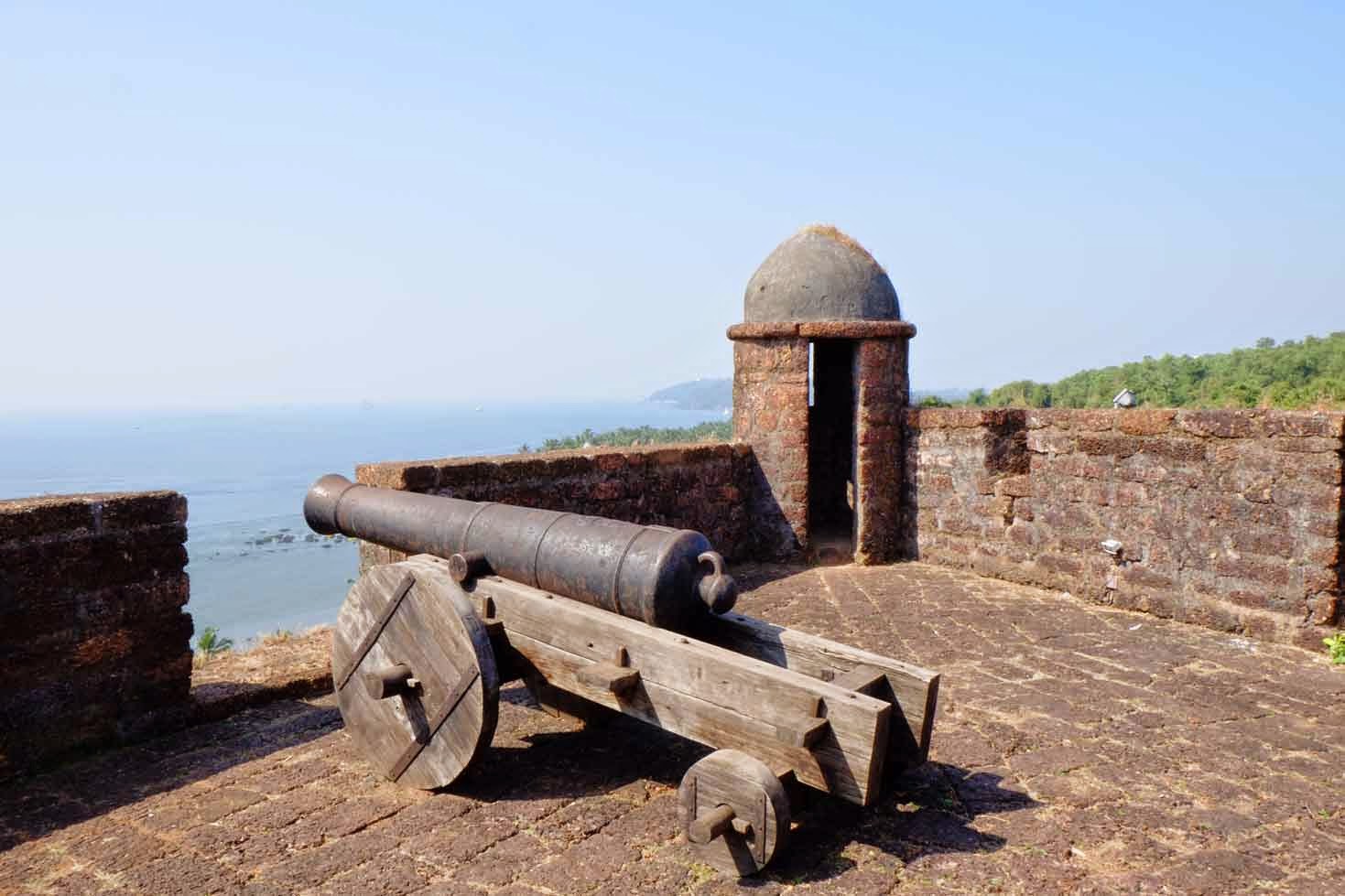Reis Magos Fort � Gunsmoke, Ghosts and Mario Miranda
 |
| Guarding the sea approach A cannon and the turret typical to this fort on the upper ramparts |
Forts...... Evoke visions of battles, gun smoke, chivalry, heroism and even a touch of romance. India is replete with forts from time immemorial, everyone made them, ancient civilisations, the later invader turned rulers, and finally the European colonising powers. The industrial revolution really put an end to forts and fortifications as a pivot from which to wage war. A classic case being during the Second World War when the Germans outflanked the French fortified Maginot Line, arguably the last �fort� constructed.
 |
| Silent Sentinel A cannon with Portuguese coat-of-arms guards the approach to the Mandovi |
A fort was the symbol of power and writ and they were made for many reasons. These were primarily defensive (most Mughal, Rajput and Maratha forts), but often as the bastion of a city state (Vasai fort in the Mumbai suburbs), revenue collection (the many tiny forts around Gwalior and Central India) and symbols of primacy like the many the many fort-palaces in most erstwhile kingdoms. Colonising powers too made forts to protect trading rights and like the forts at Kolkata, Mumbai and Chennai. Sometimes forts were made or extended as 'food for work' projects where, in times of famine, the ruler disbursed grain from the royal granaries in exchange for work.
Naval forts were important links in a shore based seaward defence and the Indian Coast is dotted with them. Usually made to protect important cities, harbours and navigable river mouths. These were usually sited in pairs on both shoulders of a harbour or creek, thus controlling entry and egress from these harbours. Reis Magos is one such fort, which in conjunction with Gasper Dias fort on the opposite shoulder of the Mandovi, protects the entrance to the Mandovi River in Goa. Made by the the Portuguese in the 1550�s, it rises steeply from the headland. The fort was designed for primarily two purposes, control passage of ships through the Mandovi River and regulate the use of the river landing at the base of the fort. Thus it has high turrets, typical of the age overlooking the entire approaches seaward and a fortified corridor leading to the river landing itself. It has multiple gun-decks at various levels with ports for 33 guns which dominated the area around and room for a small garrison. Like most Goan construction this fort too is built of red laterite stone.
 |
| the Protected Steps from the upper ramparts to the lower river landing |
By the 19th century naval forts became less important and Reis Magos was converted into a jail for convicted freedom fighters. It continued as a jail till the 1990�s when it was abandoned and fell into decay.
Restored and opened to the public in 2012, it is site worth visiting. Apart from the history associated with the fort, it today houses a superb collection of Mario Miranda pictures and extracts from his childhood diaries.
Don�t miss this fort on your next visit to Goa, Portugese ghosts and the booming of cannon through the ages will make it worth your while, as will the exquisite drawings by Mario Miranda.
Restored and opened to the public in 2012, it is site worth visiting. Apart from the history associated with the fort, it today houses a superb collection of Mario Miranda pictures and extracts from his childhood diaries.
Don�t miss this fort on your next visit to Goa, Portugese ghosts and the booming of cannon through the ages will make it worth your while, as will the exquisite drawings by Mario Miranda.




Comments
Post a Comment